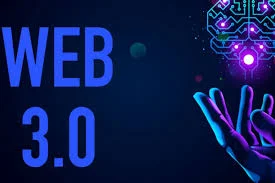In recent years, the educational landscape has witnessed a revolutionary transformation with the integration of Virtual Reality (VR) and Augmented Reality (AR) into e-learning platforms. These immersive technologies have opened up new frontiers for educators to engage learners and deliver dynamic, interactive, and meaningful learning experiences.
In this article, we explore the principles behind VR and AR integration, their diverse use cases, the perks they offer, and the potential drawbacks that educators must consider while embracing this cutting-edge technology.
Principles of VR and AR in E-Learning:
Virtual Reality (VR) and Augmented Reality (AR) are two distinct but related technologies that share the common goal of providing users with an interactive and immersive experience. The principle behind VR lies in creating a computer-generated environment that users can interact with through specialized hardware like VR headsets. On the other hand, AR overlays digital elements onto the user’s real-world environment, enhancing their perception of reality through smartphones, tablets, or AR glasses.
Use Cases of VR and AR in E-Learning:
1. Simulations and Training: VR and AR can simulate complex real-life scenarios, offering learners a risk-free environment to practice skills, such as medical procedures, engineering tasks, or hazardous operations.
2. Historical and Cultural Exploration: Through VR, students can visit historical sites, museums, or ancient civilizations, while AR can augment textbooks with interactive 3D models, making history and culture come alive.
3. Language Learning: VR can immerse learners in a virtual environment where the target language is spoken, fostering practical language skills through real-life interactions.
4. Science and STEM Education: VR and AR enable students to visualize abstract scientific concepts, such as molecular structures or celestial bodies, promoting a deeper understanding of complex topics.
5. Virtual Laboratories: VR and AR can replicate laboratory experiments, allowing students to conduct hands-on experiments without physical resources.
Perks of Integrating VR and AR in E-Learning:
1. Enhanced Engagement: VR and AR captivate learners by offering interactive and experiential learning opportunities, promoting higher engagement and knowledge retention.
2. Personalized Learning: These technologies enable adaptive learning experiences, tailoring content to individual preferences and learning styles, ensuring an optimized educational journey.
3. Improved Skill Development: The immersive nature of VR and AR simulations allows learners to practice skills repetitively, leading to enhanced proficiency in real-world applications.
4. Real-Life Application: By bridging the gap between theory and practice, VR and AR empower learners to understand how knowledge translates into real-life scenarios, encouraging practical application.
5. Global Accessibility: VR and AR can democratize education by reaching learners worldwide, irrespective of geographical boundaries, enhancing inclusivity and access to quality education.
Drawbacks and Considerations:
1. Cost and Infrastructure: VR headsets and AR devices can be expensive, and integrating these technologies requires significant initial investments in hardware and software.
2. Learning Curve: Some learners may face challenges in adapting to VR and AR experiences, potentially hindering the learning process.
3. Health and Safety Concerns: Prolonged use of VR headsets can cause discomfort, and AR usage may distract learners in certain environments, necessitating moderation and breaks.
4. Limited Content Availability: While the technology is advancing rapidly, there might be a lack of specialized VR and AR content in certain subject areas.
Conclusion:
Integrating Virtual Reality (VR) and Augmented Reality (AR) in edTech offers an exciting opportunity to revolutionize education and learning experiences. By adhering to sound principles and leveraging diverse use cases, educators can harness the perks of immersive technologies to create engaging, interactive, and effective learning environments. However, it is essential to be mindful of the potential drawbacks and considerations to ensure that VR and AR integration is implemented thoughtfully and responsibly, ultimately enhancing the learning journey for all learners in the digital age.


